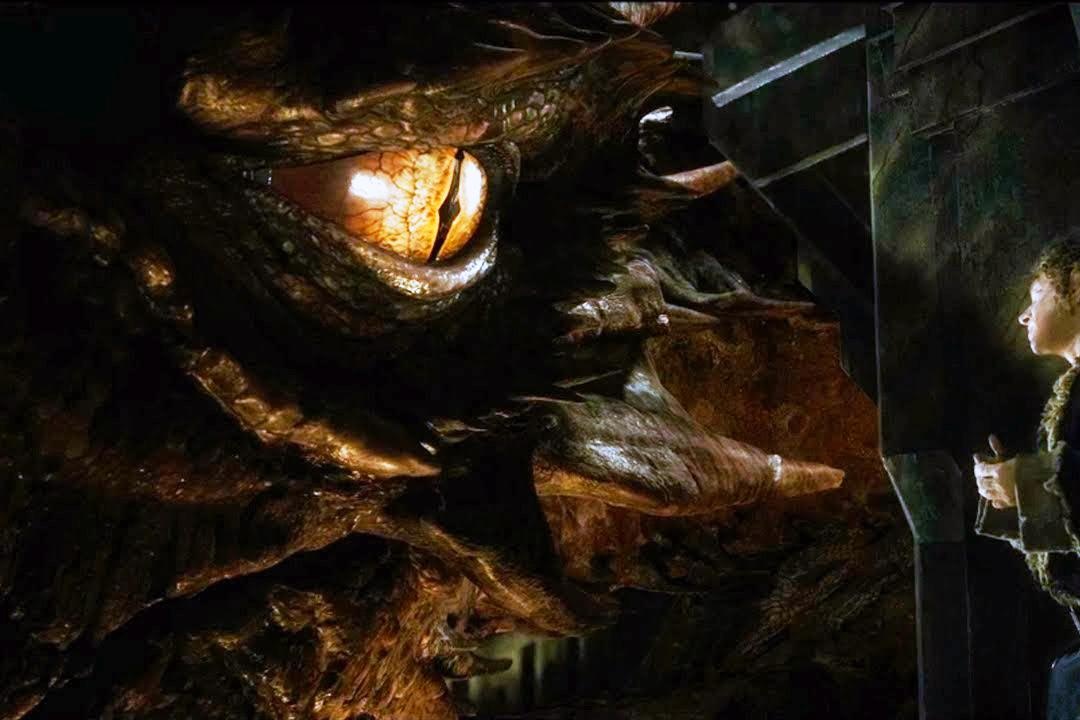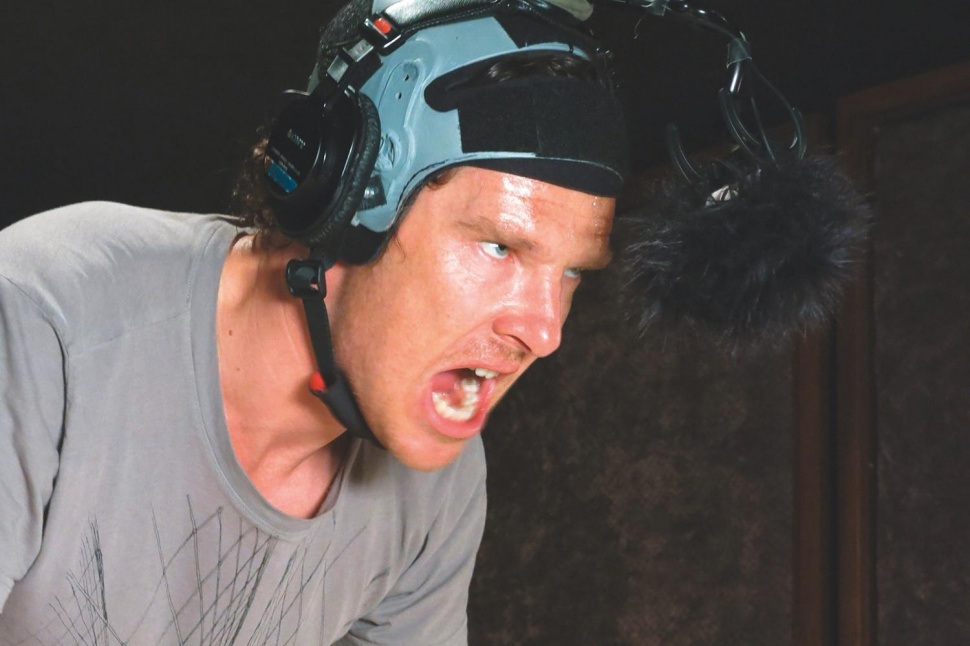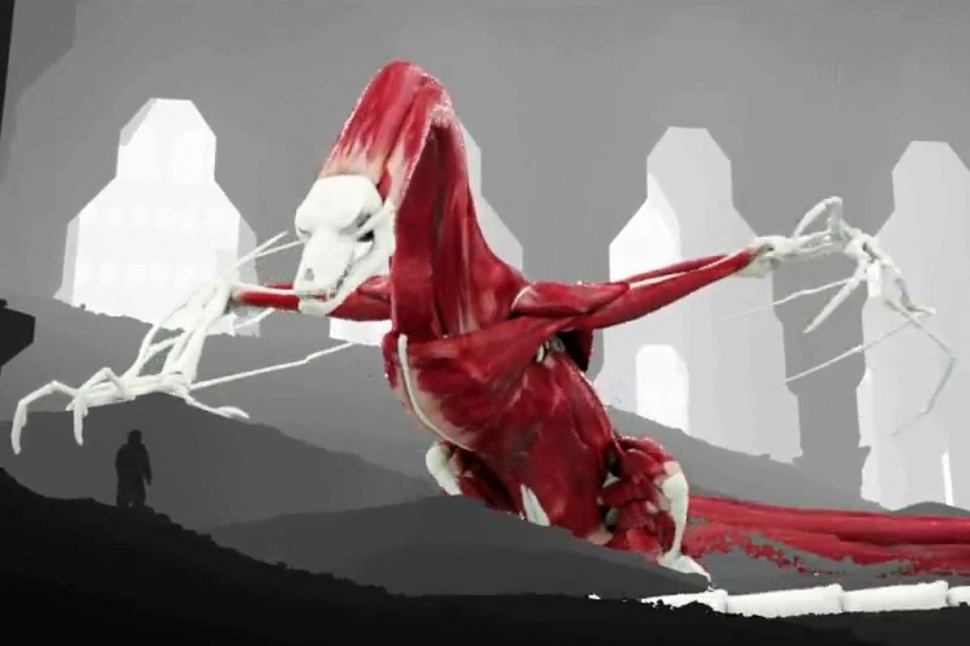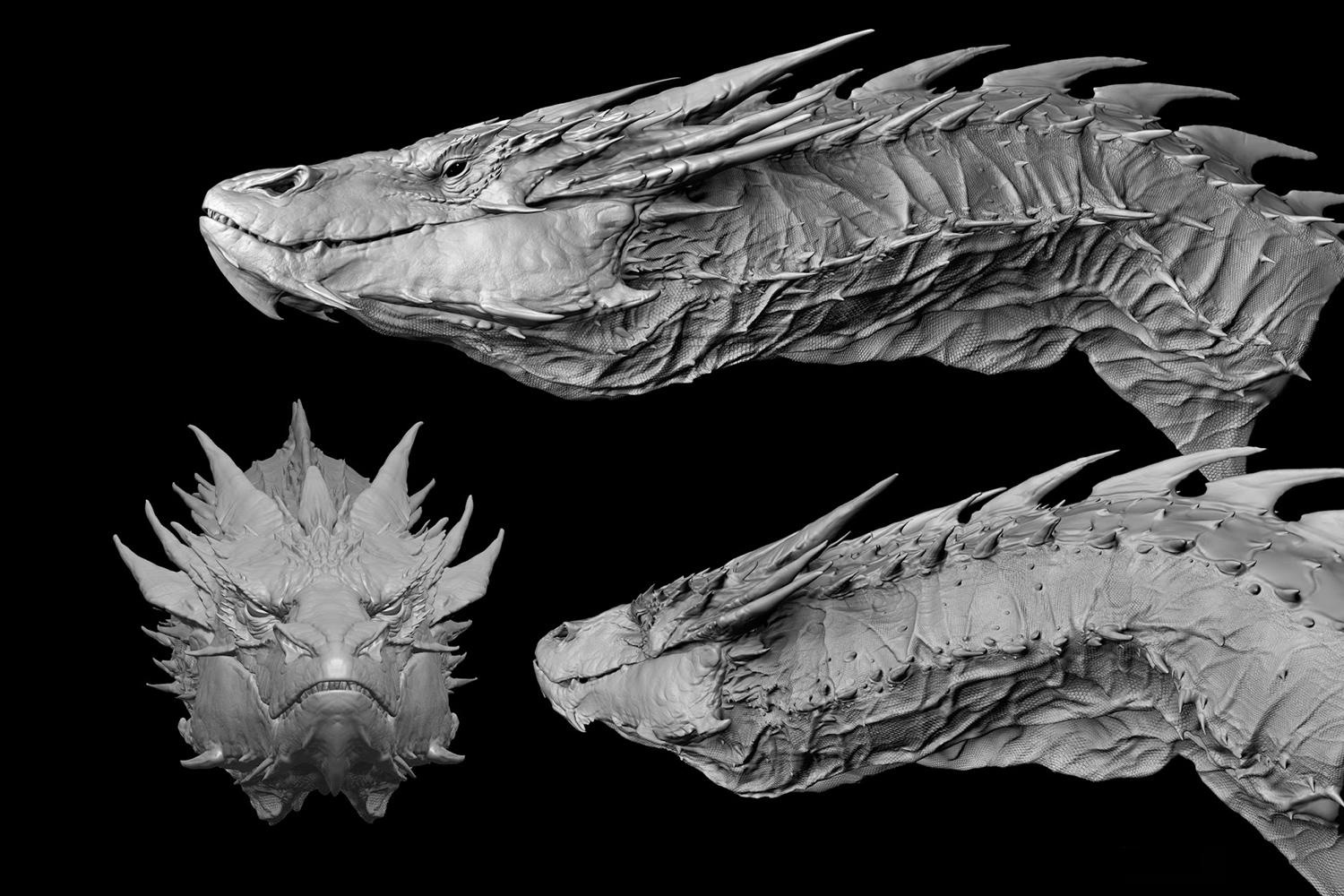
Smaug the Stupendous eyes burglar Bilbo Baggins in The Hobbit: The Desolation of Smaug. Photo via Digital Trends.
“Truly, the tales and songs fall utterly short of your enormity, oh Smaug the Stupendous.” In his encounter with the dragon Smaug in the deep halls of Erebor in The Hobbit: The Desolation of Smaug, Bilbo Baggins voices the reaction that the fans hoped for, ever since the announcement of The Hobbit films. For many fantasy fans, Smaug is the definitive dragon, the standard by which all dragons are judged. In a recent article, Digital Trends gave readers a peek inside the making of Tolkien’s famous dragon.
To be sure, Peter Jackson and his team felt the pressure of creating Smaug. Digital Trends quoted Jackson from a 2013 interview with Hero Complex: “You keep hearing all this expectation,” Peter Jackson told Hero Complex in December 2013. “’I want to see Smaug, I want to see Smaug.’ . . . Those things are a bit of a pressure.” Fortunately for all concerned, not least the fans, the combination of Weta Digital, led by four-time Oscar winner Joe Letteri, with the casting of actor Benedict Cumberbatch as the voice of Smaug proved to be a winning ticket.

Benedict Cumberbatch performing motion-capture for The Hobbit: The Desolation of Smaug. Photo via Digital Trends.
The process of bringing Smaug to life on the screen was intricate and challenging. Digital Trends explains that, from a technical standpoint, the Weta Digital team had to address a number of issues presented by bringing to life a creature of such huge scale and non-human form. Because of Smaug’s lizard-like body and head, the Weta team had to figure out how to make Cumberbatch’s performance inhabit a decidedly non-human body. This challenge required Weta to change how they handled motion-capture for Smaug. Instead of performing on set, Cumberbatch did his motion-capture sessions only for the animators. In fact, the first motion-capture session occurred before the Weta team began working on the animation for Smaug. They were then able to use the actor’s performance as a basis for experimenting with different ways they might animate the dragon. Later in the process, the actor fine-tuned his dialog with the animation. Cumberbatch did a series of sessions over time, as Smaug’s animation unfolded. In later sessions, he was able to see some the animation, and use that imagery to inform his performance.
Making Smaug speak convincingly was a particularly difficult challenge. Digital Trends quoted Eric Saindon, visual effects supervisor for Weta, in a January 2014 interview with Art of VFX, when he explained “[Smaug’s] crocodile-shaped snout and lack of humanoid mouth-shapes were an interesting challenge for animators who used reference footage of Benedict’s full body movements as he delivered his lines as a guide.”
Smaug’s sheer enormity also posed a number of technical problems for his animators. Weta had to conceptualize and convincingly implement everything from Smaug’s individual scales to the membranes of his wings. Realizing these features involved hand-animating such elements as scars and dried skin. Some of Weta’s work for Smaug was so ground-breaking that it was recognized with a special technical Oscar by the Academy of Motion Picture Arts and Sciences. Digital Trends explains that the “Tissue” system created by Weta to animate Smaug “allowed animators to simulate the muscle movements necessary for Smaug to do everything from simple actions like craning his neck around a wall, to initiating flight using his shoulders and wings.” Weta developed a high-resolution facial puppet for Smaug, to maximize the range of expressiveness while maintaining the integrity of his scales as the face moved. The facial model included complex lip and jaw shapes, to accommodate the dragon’s speech, as well as fine control over facial features. The animators designed Smaug’s spikey horns to be flexible, so that they could help convey the dragon’s moods.

The new tissue system developed by Weta Digital to create Smaug won a special technical Oscar. Photo via Digital Trends.
To top all this off, Smaug had to breathe fire. Weta modeled the dragon’s fiery breath on World War II flame-throwing tanks. To achieve the almost liquid jets of fire, Weta used a water effects tool developed for The Hobbit: An Unexpected Journey (also used in the barrel escape sequence and Gandalf’s encounter with the shadowy Necromancer in The Hobbit: The Desolation of Smaug).
The creation of Smaug is a tour-de-force of modern movie magic, accomplished by the technical wizardry of Weta Digital and Benedict Cumberbatch’s performance. You can find more details in the complete Digital Trends article, and in the upcoming book, Smaug: Unleashing the Dragon.
Middle-earth News has more coverage and behind-the-scenes information about the effects for The Hobbit: The Desolation of Smaug in Amanda’s article, “First Behind the Scenes Looks at Smaug,” Anastasia’s look at an “Interview With Joe Letteri,” Evie’s “New ‘The Hobbit: The Desolation of Smaug’ VFX Reel,” and Alice’s report, “Matt Aitken on Visual Effects of The Hobbit: The Desolation of Smaug.”




2 Comments